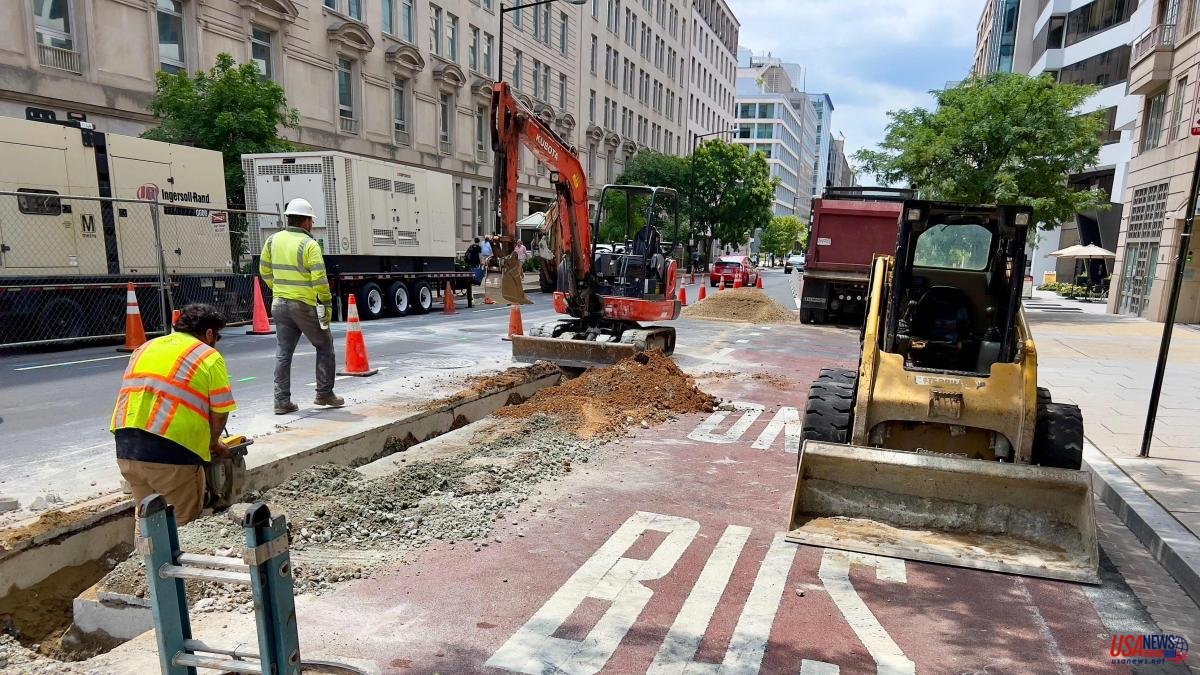The expected cooling of inflation, after the aggressive policy of the Federal Reserve (Fed) to increase the price of money, was certified this Wednesday. The price index grew in the United States at a rate of 8.5% during July, still very high, excessively high, but it represents a window of hope for citizens. This new index is below the forecast (8.7%) and has fallen more than half a point compared to June, which reached 9.1%, the highest in more than four decades.
The drop in the consumer price index reflects a drop in gasoline prices, today at four dollars a gallon (3.78 liters) when in June it was a dollar above, and the attenuation of problems in the supply chain , the two elements that are cited as engines in the decline in inflation.
Economists predicted that prices in July, month on month, would rise 0.2%, down from 1.3% previously. There they were wrong since the variation of 1.3% was maintained, according to the statistics office of the Department of Labor, which means that, although they did not fall, the average growth was zero. The value of 8.7% annualized continues to be excessive, the experts stressed, although it was seen as a relief because it is seen as a demonstration that the ceiling had been reached in June. President Joe Biden breathes, who also expects this Friday the final approval by Congress of a large investment in ecological infrastructure and health, as well as a reform of the tax code, which in total will mean some 740,000 million dollars.
Month on month the index was flat due to a 4.6% decline in energy, with gasoline falling 7.7%. But there was an increase in food and 0.5% in housing. Excluding volatile items like food and energy, the so-called core price index grew at an annualized level of 5.9%, or 0.3% monthly, compared with estimates of 6.1% and 0.5%. , respectively.
However, inflationary pressure remains high. The increase in power reaches 10.9% in the calculation of twelve months, the fastest pace since May 1979. Even with the monthly drop in energy, electricity rose 1.6%, which represents 15 .2% compared to 2021. The energy index rose 32.9% compared to the previous year.
This cooling is a reflection of the aggressive policy of the Fed, the US central bank, with the rapid rise in interest rates with the aim of taming the increase in the cost of daily life. This price data, softer than expected, made the Dow Jones stocks shoot up.
High inflation is the result of rapid growth after emerging from the pandemic lockdown, in part fueled by low interest rates, which were at or near zero. As soon as it saw that the increase in prices did not fit its forecasts, the Fed began raising rates this year with the aim of cooling a powerful labor market, slowing demand and curbing inflation, but trying not to provoke a recession. The Fed increased the price of money in its latest meetings, with special emphasis on June and July (0.75% on each of those occasions), and plans to do so again in September.
Despite these efforts, the Gross Domestic Product (GDP) contracted in the period between April and June, adding the second quarterly drop, which for experts is a sign of a technical recession. The White House and the president of the Fed, Jerome Powell, maintained that one cannot speak of a recession.
Analysts considered that there are four markers on inflation. The prices of raw materials, which are going down. The supply chain, which is getting better. But they stressed that the situations in the real estate sector and the labor market still persist, much stronger in July than expected, which make prices continue to rise.
“There is still a problem with services inflation, which is driven by housing and labor shortages,” Aneta Markowska, chief economist at Jeffries, told CNBC.













